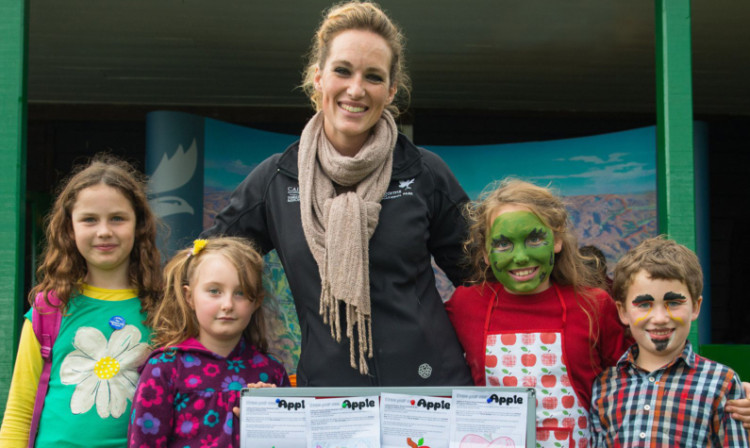Cairngorm National Park is getting fruitier. Jack McKeown finds out about an orchards project that will soon be bearing fruit.
Cairngorm National Park is 10 years old.
The second of Scotland’s national parks, covering a vast and beautiful expanse of Aberdeenshire, Moray, Highland, Angus and Highland Perthshire, was set up in 2003.
To celebrate its first decade, the park had planned to plant a symbolic 10 orchards so communities in its range could enjoy a lasting resource.
The only trouble is, the scheme was a victim of its own success.
“We had 20 entries for community orchards,” explains Cairngorm National Park’s Food for Life development officer Glynis Ross.
“We didn’t want to turn any of the projects down, so we only rejected where the sites were assessed as being unsuitable for growing fruit trees.”
Communities had to put together 100-word entries explaining why they would like an orchard.
“We had a fantastic response,” Glynis continues. “Church groups wrote to us saying they liked the fellowship aspect it would bring.
“Schools said they wanted to teach children to cook with food they had grown themselves. “
The orchards project is the final piece in a three-year programme that has seen gardens set up in schools, churches and other community focal points, cookery courses, community “grow-your-own” events and chefs “adopting” local schools.
“There is only six months of the three years left,” Glynis explains. “And I wanted something that would provide a legacy that was sustainable and long-lasting.
“No child anywhere in Scotland and especially not in our area, should think apples come from Tesco and eggs come out of cardboard boxes.
“I want communities to be able to come together and produce their own food.”
The sites cover a huge area over the expanse of Cairngorm National Park. “We were very aware we didn’t want to just cover the A9 corridor, so we’ve got some that are out near the edges of our territory,” Glynis continues.
Each of the 18 sites will get eight fruit trees, with the exception of Glenlivet, where the Crown Estate matched the trees provided, doubling their number to 16.
The trees apple, plum and pear were selected by Andrew Lear, based in the Perthshire village of Bankfoot.
He and his wife Margaret run Plants and Apples, which teaches people everything from how to grow and manage fruit trees to how to cook and brew using home-grown produce and even how to forage in the wild.
“Andrew is a genius when it comes to growing fruit,” Glynis continues. “He will be visiting all 18 sites so he can select varieties that will grow well in each situation.
“Everyone said Cairngorm National Park isn’t a good area for growing fruit. But they were wrong, there are plenty of Scottish varieties.
They were created here so they know the weather and the conditions. They’ll thrive here.”
The project has been put together on a shoestring budget of just £5,000. “Planting isn’t expensive, at all,” Glynis says.
“Fruit trees only cost around £10-£15 each and they live practically forever.
“The expenditure is in the effort of planting and tending them. But that brings its own rewards.
“Healthy, locally-produced produce that doesn’t have millions of food miles on it shouldn’t be something that only the better off can have.
“It should be affordable for everyone.”
A schools’ drawing competition has been run in conjunction with the project and each orchard will have a plaque bearing the winning picture of an apple.
The trees, all two-year-old maiden blossoms, will be planted by next spring.
“We should see the first small fruits next year and then get our first bumper crop the year after that,” Glynis adds.
“In the future I would love to get a path network set up between them all. A blossom trail would be quite wonderful.”
